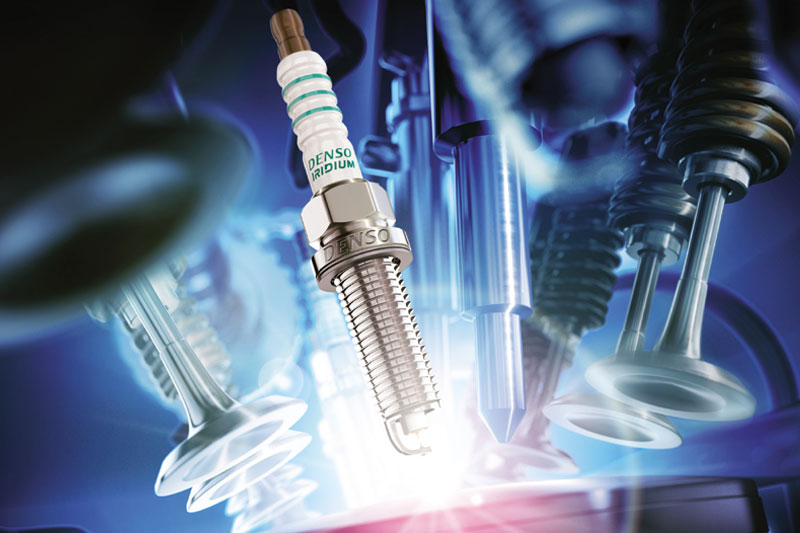
Spark plugs perform a pivotal role in petrol engine response and represent an increasingly complex electrical set-up. Technicians should take time to remind themselves of some of the visual signals of spark plug problems, as well as their wider symptoms and causes.
A spark plug’s life can be affected by many factors. Dirt, fouled plugs (caused by carbon build-up), breakage and wear can all play a part and the portions of the spark plug that wear over time are the centre and side electrodes. The two main types of wear are:
Oxidised wear – oxidised scale build-up that drops off in places, only to be replaced by further irregular build-up.
Spark wear – melting/rounded edges/increased plug gaps caused by discharge energy and wear between the two electrodes.
You should also remember that failure to correctly install, inspect, clean and re-gap spark plugs can also result in problems, especially as 70% of a plug’s wear is on the firing electrode. A bigger gap will stress the coil pack, causing premature failure and resulting in potentially costly faults. Modified engines also need to be considered to ensure that the correct application is used.
OTHER CAUSES OF SPARK PLUG FAILURE
NORMAL
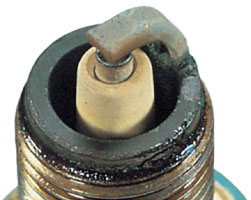
Appearance: Light grey or tan deposits and slight electrode erosion.
CARBON FOULING
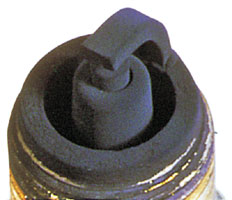
Appearance: Dry, soft black carbon on the insulator and electrodes.
Results: Poor vehicle starting, misfiring, faulty acceleration.
Possible causes: Faulty choke, over-rich air-fuel mixture, delayed ignition timing, bad ignition leads, plug heat range too cold.
LEAD FOULING
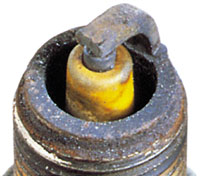
Appearance: Yellow or tan cinder-like deposits or a shiny glaze coating on the spark plug insulator.
Results: Misfiring under sudden acceleration or heavy load conditions but no adverse effect under normal operating conditions.
Possible causes: Use of petrol with high-lead contents.
OVER-HEATING
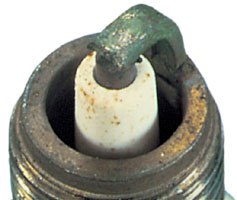
Appearance: An extremely white insulator with small black deposits and premature electrode erosion.
Results: Loss of power at high speed/heavy load.
Possible causes: Plug insufficiently tightened, engine insufficiently cooled, ignition timing too advanced, plug heat range too hot, severe detonation.
PRE-IGNITION
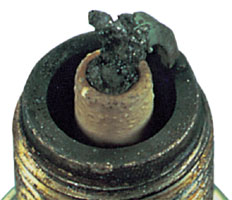
Appearance: A melted or burned centre and/or ground electrode, blistered insulator and aluminium or other metallic deposits on the insulator.
Results: Loss of power then causing damage to the engine.
Possible causes: The same as over-heating. Pre-ignition takes place when combustion begins before the timed spark occurs.









